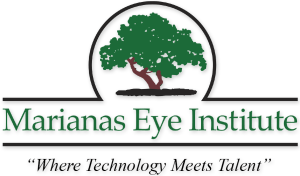When a patient gets glaucoma, it can be difficult to know whether the disease will progress slowly or advance quickly, taking vision with it. A smart “electronic” contact lens could help solve this problem.
A new study appearing in the journal Ophthalmology this April shows that electronic signals from a such smart contact lens can be used to predict which glaucoma patients may have a faster advancing version of the disease.
“This could be very useful if you want to know whether a new medication is working for a patient,” said study author C. Gustavo De Moraes, M.D., MPH, an associate professor of ophthalmology at Columbia University Medical Center. “You can see how their eye is reacting to the therapy in a much more meaningful way.”
(Although the technology is not readily available, our Saipan eye clinic continues to monitor new developments with the lens.)
Why eye pressure matters in glaucoma
Glaucoma is a leading cause of blindness in the United States and affects nearly 3 million people. Pressure inside the eye, or intraocular pressure (IOP), is the only known controllable risk factor for glaucoma.
Patients with glaucoma should get their eye pressure measured at an ophthalmologists office regularly. But what happens to their eye pressure in between visits or at night remains somewhat of a mystery, one that could help unravel more about this vision-stealing disease. To help record eye pressure over time, scientists created a smart contact lens that can indirectly measure intraocular pressure continuously.
How it works
A sensor in the lens detects when the curvature changes. As eye pressure fluctuates throughout the day and night, the curve of the lens changes, generating an electrical signal sent to a wireless device that records the signals. Similar to how an electrocardiogram shows a heartbeat, the profile of signals from the smart lens indirectly shows eye pressure changes over time.
Researchers at Columbia tested the Sensimed Triggerfish® lenses on 40 patients between ages 40 and 89 undergoing treatment for open-angle glaucoma, the most common form of the disease. Over two years, scientists performed at least eight standard visual field tests on these patients. Half were classified as having slow disease progression while the other 20 had fast disease progression.
Then patients wore the smart contact lens for 24 hours, including overnight as they slept. Investigators found that patients with steeper spikes recorded overnight and a greater number of peaks in their signal profile overall tended to have faster glaucoma progression.
Using this tool, ophthalmologists may one day be able to more accurately gauge whether a patient’s glaucoma will progress quickly by looking at a readout from the smart lens.
(Adapted from the American Academy of Ophthalmology)









